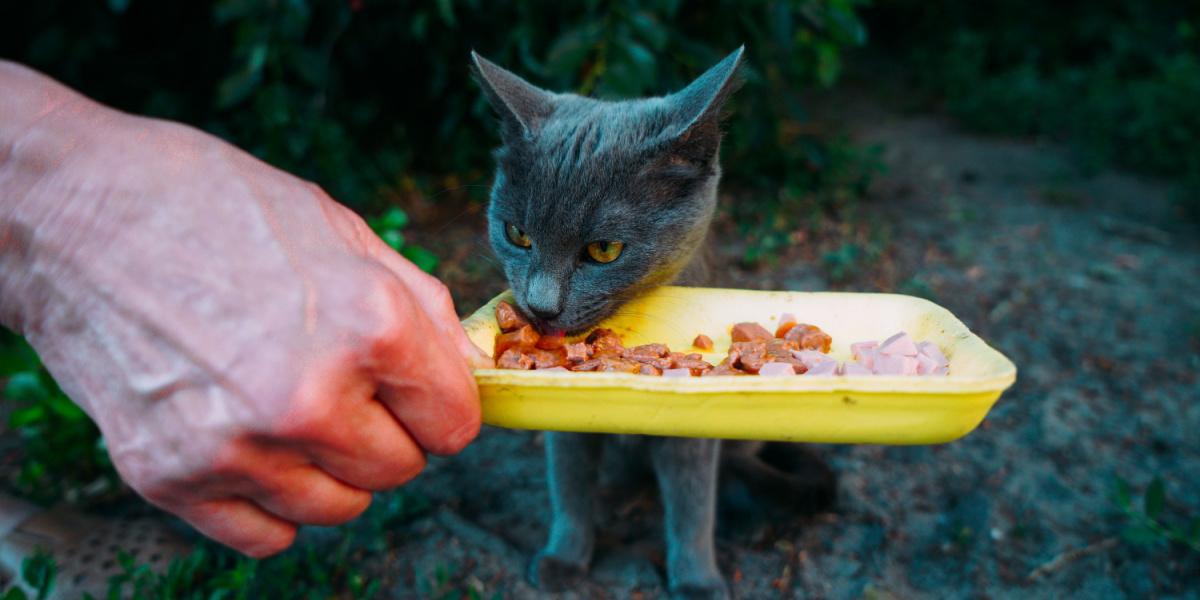
Have you stumbled across a starving stray cat? Or maybe your own cat has been missing and just returned home thin and hungry. Either way, they’re lucky you’ve found them. But now you need to know how to help them.
Take any underweight or starving cat for a checkup with a veterinarian before beginning to care for them so they can be treated for any illnesses or injuries. It's vital that you never feed emaciated or starving cats too quickly, or they can suffer from a life-threatening condition called refeeding syndrome. It is best to feed a starving cat a low-carbohydrate, high-protein, and high-fat wet canned food frequently in small amounts.Key Takeaways
Nursing a starving cat takes a lot of dedication, time, and knowledge. But it can be incredibly rewarding—you might build a bond for life. This article will take you through everything you need to know about nursing a starving cat back to health, step by step.
Also Read: What Is the Difference Between a Stray Cat and a Feral Cat?
A Word of Warning: Refeeding Syndrome
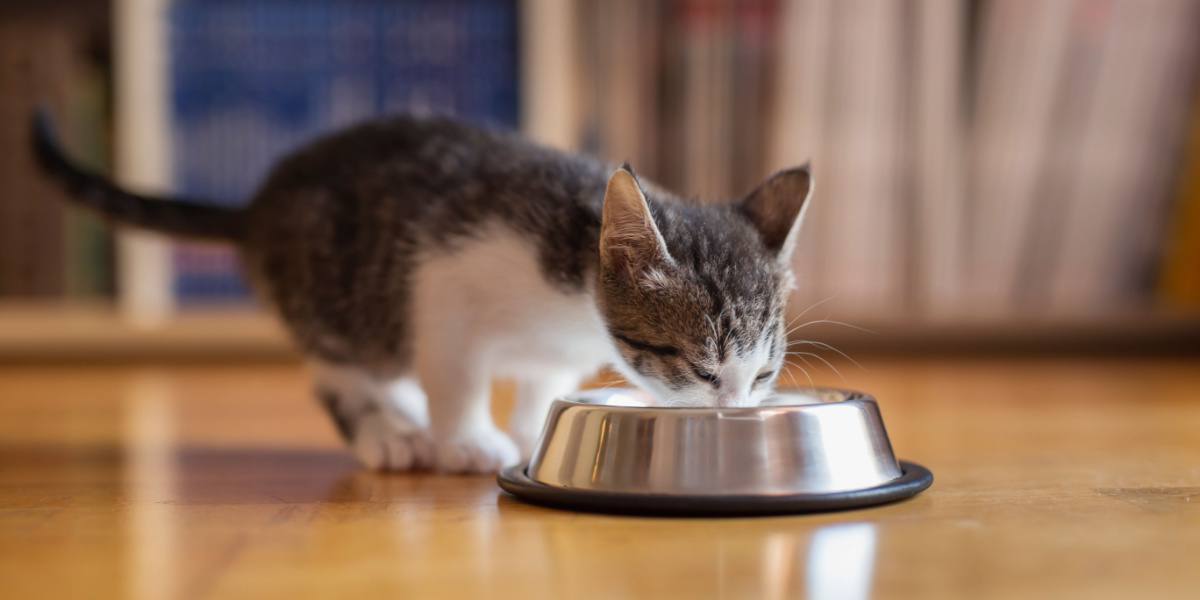
Refeeding syndrome is s serious condition that can occur if a cat begins eating too much too quickly after being deprived of food.
When you find a severely underweight or starving cat, your first instinct is to give them as much food as they will eat. It feels like the right thing to do, but it could actually be dangerous.
Cats that have not eaten for more than a few days (even if they are not underweight), or those that are suffering from malnutrition, are at risk of a serious condition called refeeding syndrome if they start eating again too quickly.
When the body goes into starvation mode it changes how it deals with nutrients. If food is re-introduced too quickly it can cause severe imbalances in the cat’s electrolytes and fluid distribution, which can be life-threatening.
Malnourished or underweight animals must be put on a gradual feeding plan. Even though it feels counter-intuitive, it is safer to re-introduce food slowly than risk feeding too much too soon. Read on for exactly how to start feeding a starving or malnourished cat.
Also Read: The Complete Feeding Guide From Kittens To Seniors
1. Assess Their Immediate Condition
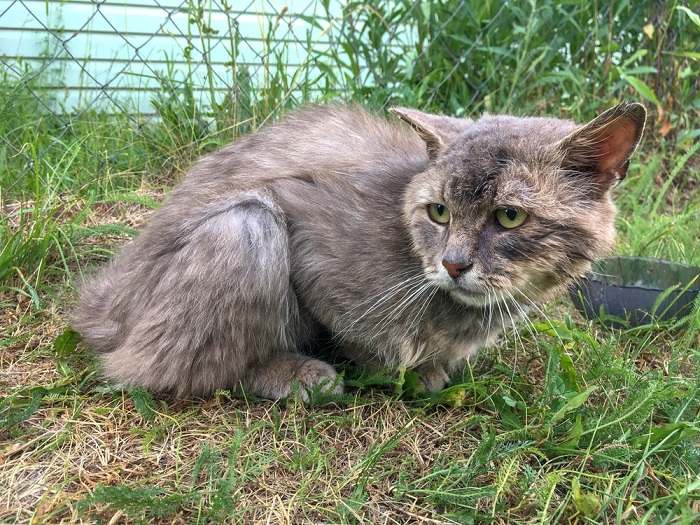
If you can handle the cat, try to feel their ribs and body to assess how thin the cat might be.
Once the cat is in a safe, secure place, the first step is to assess their current condition. Remember, they are probably very frightened, so be careful in case they lash out or try to run away.
If the cat is too frightened for you to handle, it might be best to take them straight to an animal shelter, as they will have experience nursing feral cats. If they are very weak, injured, or unable to stand you should get them to a veterinarian as soon as you can.
Also Read: What Is the Best Cat Food for Feral Cats?
You can assess the cat’s body condition score by looking at them and gently feeling their body. This will help you work out if your cat is emaciated, or just underweight, and therefore how best to feed them. You can also use this guide to monitor their recovery to a healthy weight.
It’s also important to try and work out what age the cat might be. A kitten will need very different care compared to an adult cat. Nursing a young, dehydrated, or malnourished kitten is a job best left to a veterinary professional or rescue center experienced in shelter medicine. The advice above is intended for adolescent or adult cats only.
Also Read: The Complete Guide To Feline Nutrition
2. Provide Water
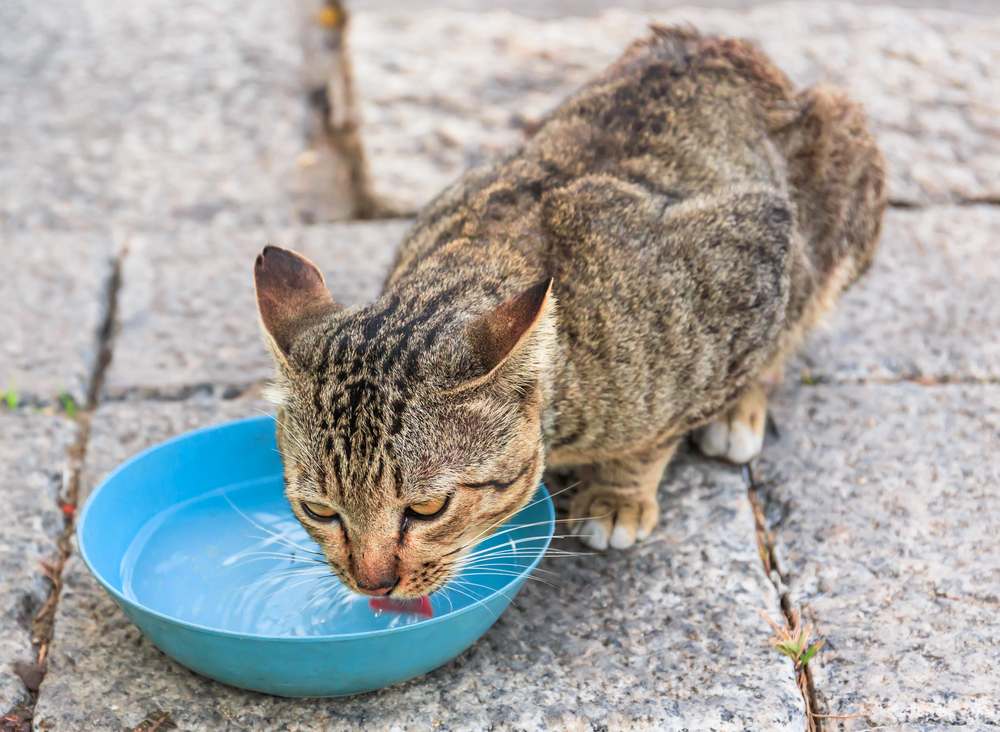
Offer the cat fresh, cool water in a shallow dish and allow them to drink as much as they want.
Water is crucial to life. Although we must be careful not to overfeed an emaciated cat, it is always right to offer them water—you could be saving their life. It is safest to offer water in a flat dish or small food bowl for the cat to drink themself.
If the cat doesn’t want to drink, you can see if they will lap some water from the end of a syringe. Be careful not to squirt the water directly into the back the mouth—just dribble it close to their lips so they can swallow it. If they are too weak to swallow, the water could enter their lungs and cause pneumonia. In this case, they might need intravenous fluid therapy (an IV drip) at the vet.
Also Read: How Long Can A Cat Go Without Drinking Water?
3. Take Them to the Vet
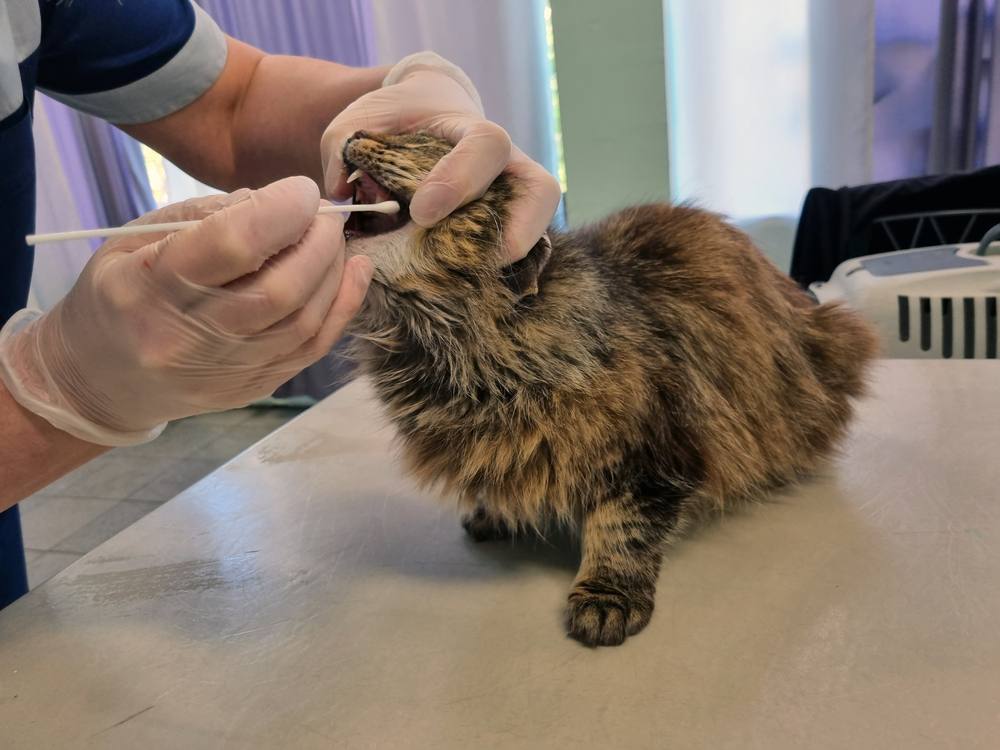
Before nursing a starving cat, have a vet look for signs of illness or injury that might require treatment.
Once you have the cat in a safe place, make a basic assessment, and offer them some water, it’s time to take the cat to see a vet. There are several reasons why a cat can become very thin—sometimes it is as simple as not having access to food. But it is also possible that the cat has a serious health condition that has caused their weight loss.
Only a vet will be able to make this assessment and advise you on the best next steps. If the cat is very unwell, the vet might advise hospitalization. However, if they seem otherwise healthy, your veterinary team is there to support you in nursing the cat back to health. They will also prescribe flea and worm treatment if they think it is appropriate.
Also Read: How To Deworm A Cat
4. Re-Hydrate
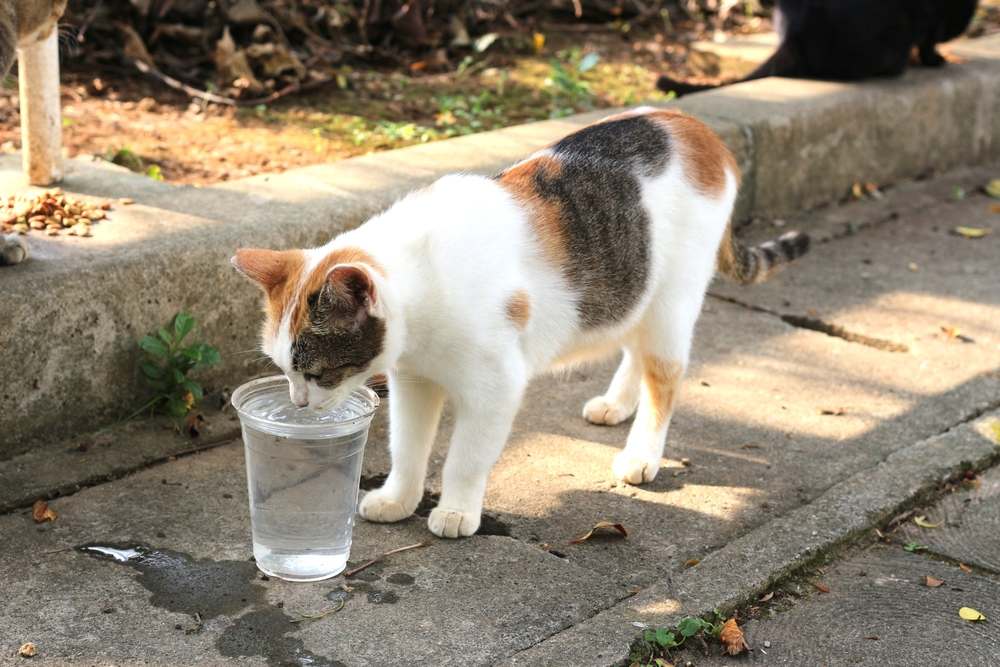
Encourage the cat to drink plenty of water, and talk to your vet about using a rehydration supplement.
Signs of dehydration include lethargy, tacky gums, sunken eyes, and a “skin tent” (if you lift and drop the skin at the nape of the neck, it remains up rather than slipping back in place). Severely dehydrated cats might need hospitalization and an IV drip. But you can nurse a mild to moderately dehydrated cat at home, as long as they will drink water themselves.
Offer your cat plenty of fresh water somewhere easy for them to access. Mixing in a rehydration supplement can help to replace some of their lost electrolytes and salts. You can buy rehydration supplements for cats from your veterinarian or your local pet store.
If your cat is not wanting to drink on their own at first, you can use a syringe to see if they will lap some water from the end. But don’t squirt water directly into their mouth unless you can see them swallowing, as it can enter their lungs and cause pneumonia. If the cat is not starting to drink by themself you will need to take them back to the vet.
Also Read: 10 Subtle Signs Your Cat May Be Sick
5. Introduce Food Slowly
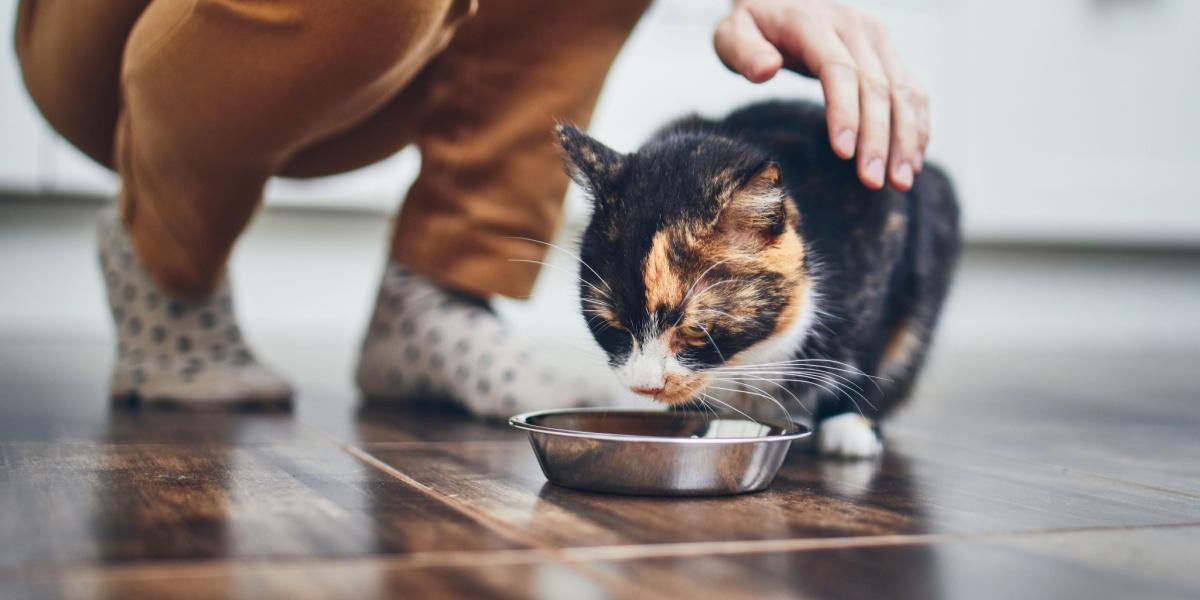
Start off feeding just 25% of the recommended amount for a cat of similar size, then gradually increase the servings over a week’s time.
The key to feeding starving cats is: go slowly. If a cat is starving or malnourished, they are at risk of re-feeding syndrome if they consume too much food too quickly. A safe guide is to start with 25% of a normal food intake for their ideal weight each day.
In other words, offer just a quarter of what you’d usually feed a similarly sized cat per day. You can work this out based on the feeding guideline that comes with the food. Increase this amount gradually, aiming to be back on 100% of their usual intake in about a week. This might look like:
- Day 1: 25%
- Day 2: 33%
- Day 3: 50%
- Day 4: 66%
- Day 5: 75%
- Day 6: 100%
You might find you need to increase this gradually to a little more than 100% of the recommended amount, to ensure they are gaining weight. But there’s no need to rush it. You are aiming for a slow and gradual weight gain over one to two months. It’s always safer to take it too slowly, rather than too fast.
Like us, when a cat hasn’t eaten for a long time, their stomachs can shrink and can struggle to take large volumes of food. Therefore, it is best to split their total daily intake into around six small meals, roughly four hours apart. This will help to avoid overloading their system.
You can gradually start to reduce the number of feeds as they get closer to a healthy weight.
What to feed: The ideal food to use is a canned wet food that is low-carbohydrate, high-protein, high-fat, and high-calorie. There are foods specially formulated for cats recovering from illness, available from veterinarians and pet stores. Look for words like “recovery” or “critical care” in their names. It is best to avoid dry food or kibble initially, as it can be difficult to digest and tends to be higher in carbohydrates.
Also Read: The 10 Best Cat Foods In 2023
6. Consider Adding Vitamins and Minerals
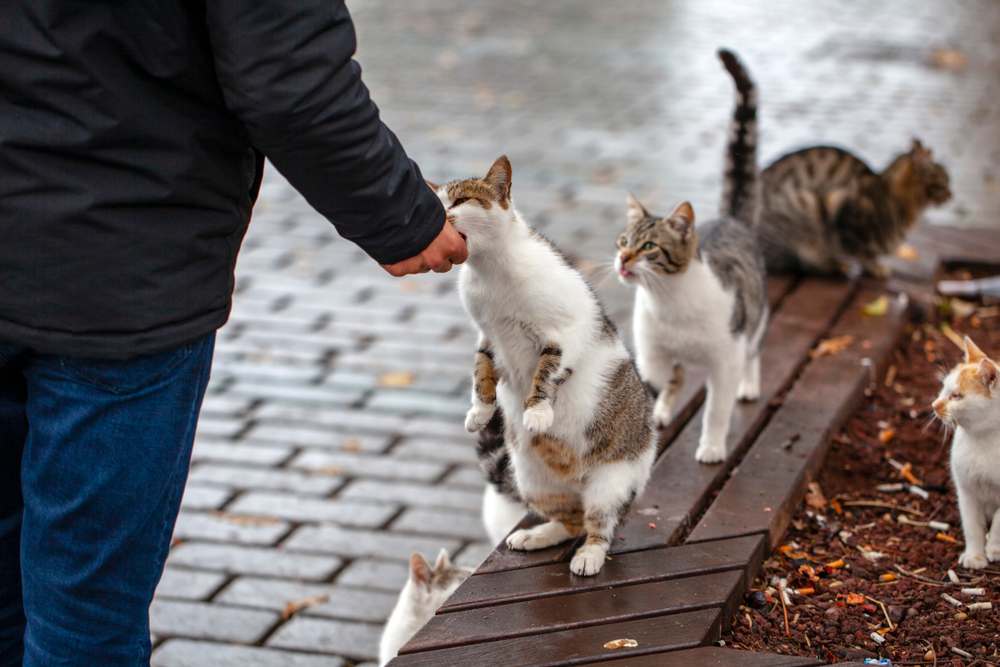
Talk to your veterinarian about adding supplements to support the cat as they continue to improve.
Once the cat is eating steadily and showing signs of improvement, you can support them even more by adding a few extra vitamins and minerals to their diet. A great way to do this is to add a readily available supplement like brewer’s yeast.
Brewer’s yeast is an excellent source of amino acids and B vitamins, which will help their organs and immune system to repair and recover. Just sprinkle a small amount on top of their meal once a day.
If your cat was showing signs of prolonged malnutrition, your veterinarian may also recommend supplementing them with thiamine. But you should discuss this with your veterinarian first.
Also Read: The 8 Best Cat Vitamins And Supplements
Signs of Improvement
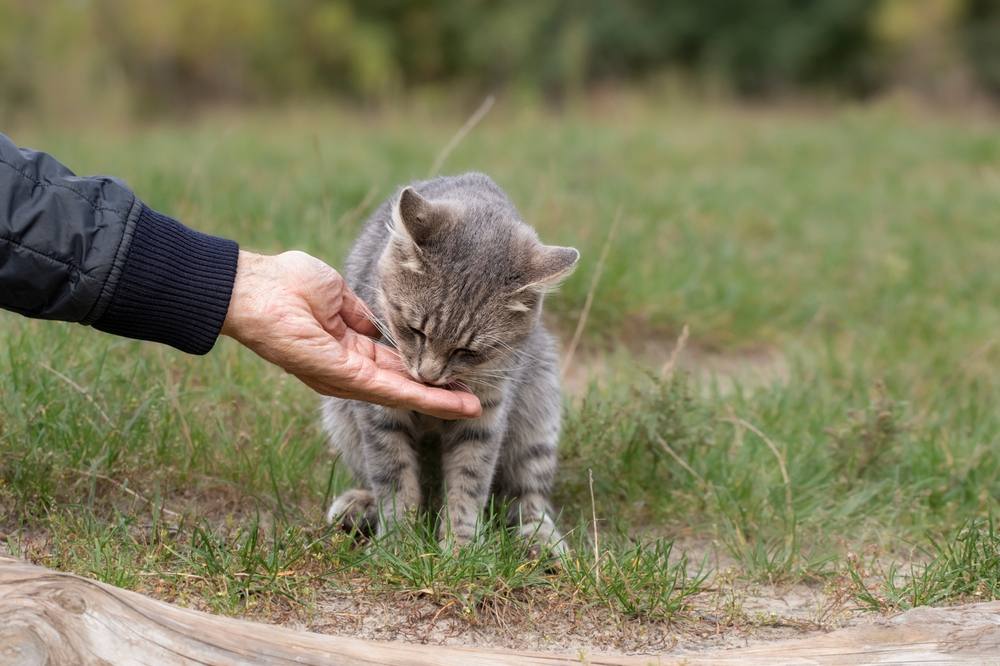
If the cat is not showing signs of improvement, head back to the vet for another assessment.
If all is going well, you should notice your cat gaining energy and becoming more active each day. It is useful to weigh them every few days to monitor their weight gain. They should be eating and drinking independently, with a good appetite.
As long as they are making good progress you can continue to increase their food intake to help them gain weight. Once you’re through the first few weeks you can also gradually transition them onto a regular wet or dry high-quality cat food.
Don’t forget to reduce their portions once they are a healthy body weight to avoid them becoming overweight!
Also Read: 5 Common Causes Of Weight Gain In Cats
When To Worry

If the cat doesn’t show clear signs of improvement, go back to the vet for a followup exam.
Once a starving cat is re-hydrated and has started to eat again, they should show signs of improvement. If your cat is not gaining weight, not eating well, or showing any signs of illness, take them back to the veterinarian for a checkup. It might be a sign that there is something more serious going on.
If the cat is severely malnourished or emaciated, remember to watch out for signs of refeeding syndrome as you begin feeding them. These include:
- Difficulty breathing
- Swelling or edema
- Neurological signs
- Nasal discharge
- Weakness
If you see any of these signs, stop feeding the cat and take them to a veterinarian right away.
Also Read: Top 10 Things Your Vet Wishes You Knew
Final Words
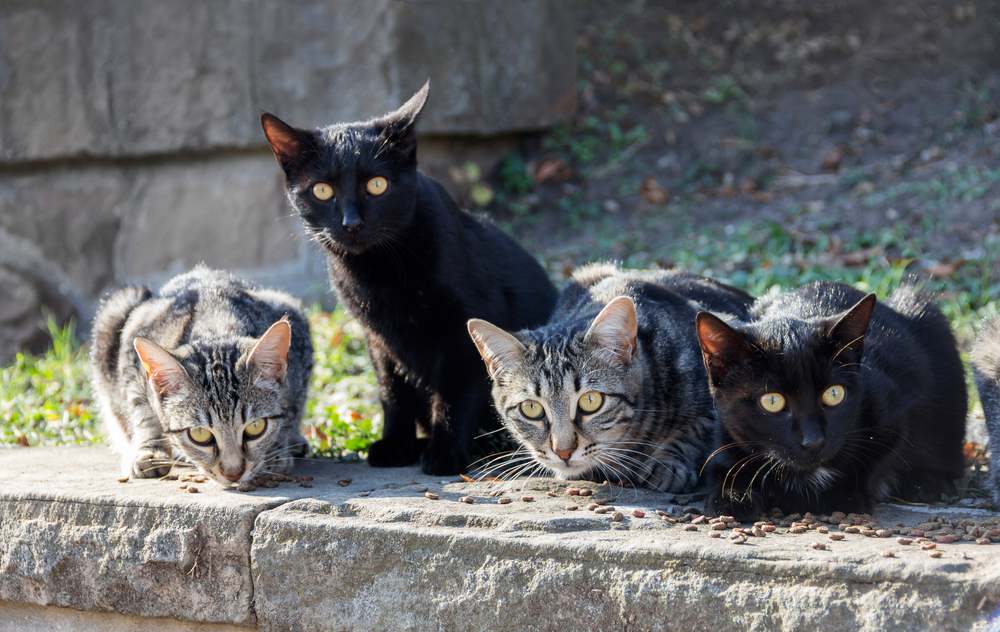
Cats often bond closely to the people who save them from starvation or illness
Nursing a starving cat is hard work, but it can also be very rewarding. With time, dedication, and careful feeding, many starving cats go on to make a full recovery. Of course, if it is your own cat that you are nursing, you will already have an amazing bond. But if this is a cat you have taken in, then this is just the beginning of a special relationship.
In the beginning, a starving cat will probably be feeling frightened and unwell. But as they begin to recover and settle into their new environment, their personality will start to shine through. Try to let them come to you, and remember it takes time to build trust. It will be worth it.
Remember, any underweight or starving cat should be taken for a checkup with a veterinarian before beginning to care for them. Your vet will identify any underlying health issues that need treating and give you all the advice and support you need to nurse the cat back to full strength. Once you have the green light to go ahead, you have a rewarding journey ahead of you.
Also Read: How Much Should Cats Eat And How Often
Frequently Asked Questions
How do you take care of a starving cat?
If you find a starving cat, the best thing to do is offer them water and take them straight to the vet. You must be careful not to feed emaciated or starving cats too quickly, or they can suffer from a life-threatening condition called refeeding syndrome. Instead, offer small amounts of wet food often.
What is the best thing to feed a starving cat?
It is best to feed a starving cat a low-carbohydrate, high-protein, and high-fat wet canned food. There are commercially available diets specially formulated for recovering cats. It is important to feed little and often, starting at 25% of their usual intake to avoid refeeding syndrome.
You can increase this over a week to a normal amount, as long as they are doing well.
How do you feed a starving cat that won’t eat?
If you have a starving cat, and they don’t want to eat, they are likely very unwell. You should take them to the veterinarian for a full examination. If a cat will not eat on their own within a few days, your vet might need to place a feeding tube.
How long can a starving cat survive?
Although cats can survive without food for about two weeks, they will become progressively weaker and more unwell. Not eating is a sign that there is something wrong with your cat, so you should make an appointment with your veterinarian if they have not eaten for more than a day or so.
Cats can’t survive for more than two or three days without water, so if they aren’t drinking you will need to take them to the vet even sooner.
Can cats recover from starvation?
With time, dedication, and careful feeding, cats can make a full recovery from starvation. So, if you find a sick, thin, or hungry cat, it is well worth giving them a chance. The first step is to take them to a veterinarian for a full check over. Remember, only feed them small amounts to begin with.







